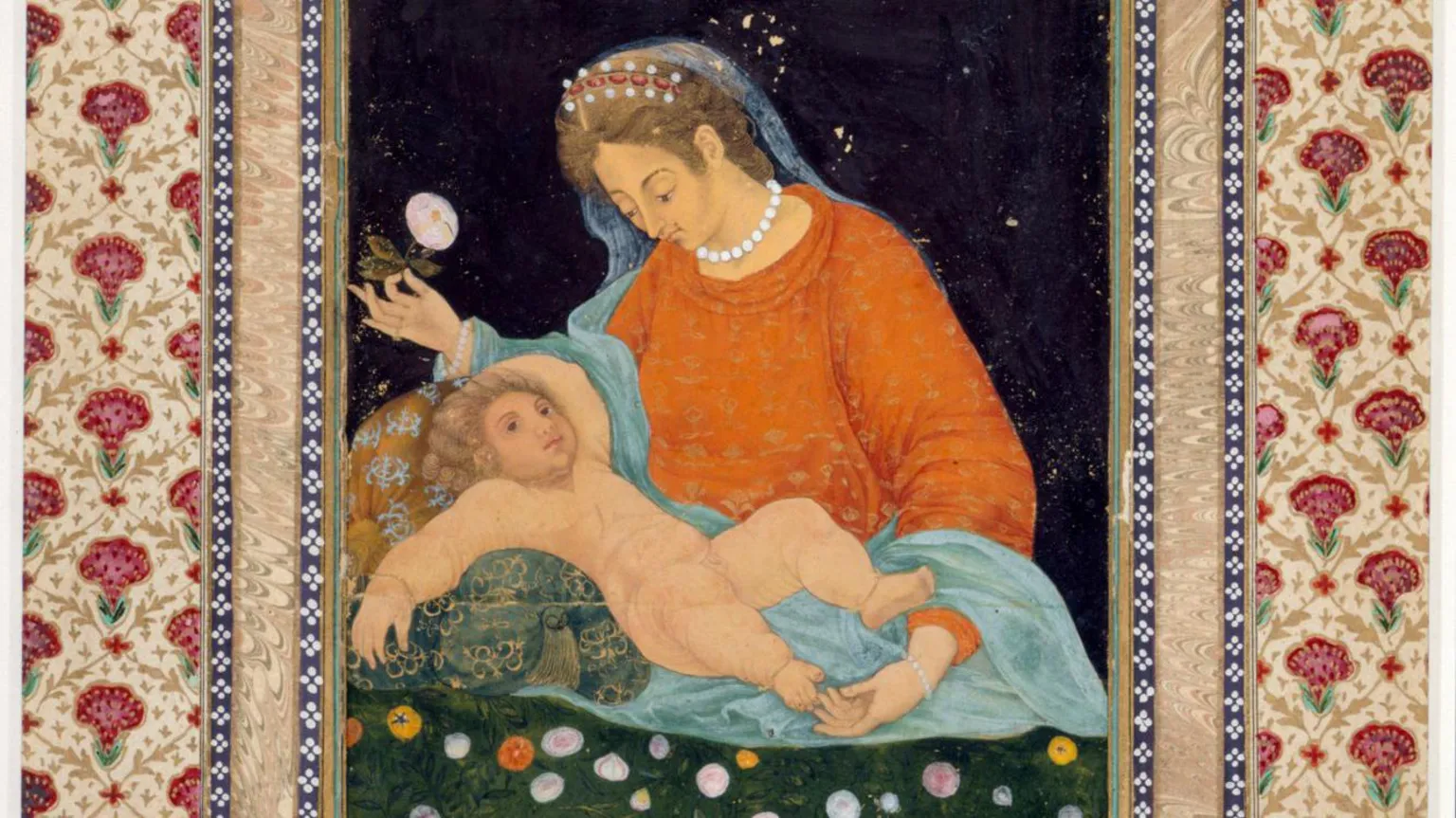The birth of Jesus Christ, a pivotal biblical event, has inspired countless Western artists, whose depictions often reflect the aesthetic and creative ideals of their time and region. These artworks, among the most recognized representations of Christian art, have significantly influenced global perceptions of the event while limiting non-Western interpretations.
However, over the centuries, Indian artists have offered their own visions of Christ’s birth and other Christian themes, creating a distinctive body of work. Whether consciously or unconsciously, these interpretations breathe fresh meaning into the nativity and Christianity, infusing them with uniquely Indian perspectives.
Indian Artistic Interpretations of the Nativity
Mughal Influences
Mughal emperor Akbar is credited with introducing northern India to Christianity by inviting Jesuit missionaries to his court. These missionaries brought sacred texts and European Christian art, which influenced Mughal court painters. Akbar and his successors commissioned murals with Christian themes, and court artists began incorporating Islamic artistic elements into these works.
Historian Neha Vermani highlights a remarkable Mughal painting featuring Emperor Jahangir in a nativity scene traditionally centered on Mary, Joseph, and baby Jesus. “Mughal rulers saw themselves as ‘just’ and ‘universal’ leaders, fostering harmony among religions. This inclusivity was central to their identity and legacy,” Vermani explains. An 18th-century Mughal painting showcases signature elements of this style, such as vibrant colors, intricate ornamentation, and a blend of naturalism with stylization.
Jamini Roy’s Folk Modernism
Born in 1887 in West Bengal, Jamini Roy developed a distinctive artistic style by merging Bengali folk art and Kalighat painting traditions. Ashish Anand, CEO of DAG, notes that art critic W.G. Archer observed how Roy portrayed Christ as a Santhal figure, reflecting the lives of India’s tribal communities.
“The simplicity of Christ’s life and his sacrifice resonated deeply with Roy,” Anand says. “His works on Christian themes are as significant as those on Hindu mythology, rendered in the folk-modernist style he made uniquely his own.”
Angelo de Fonseca’s Localized Iconography
Goa-born Angelo de Fonseca (1902) redefined Christian iconography by blending Eastern and Western influences with his Goan heritage. In Fonseca’s paintings, Mary is not depicted as a fair-skinned maiden in a blue gown but as an Indian woman with brown skin, clad in a sari, and adorned with a mangalsutra. Biblical scenes are set against Indian backdrops, featuring local motifs and cultural elements.
Rinald D’Souza, director of the Xavier Centre of Historical Research in Goa, explains that Fonseca’s work aimed to counter the dominance of Western artistic narratives. “Fonseca sought to root Christianity within the Indian subcontinent, challenging its perception as a primarily Western tradition. His watercolors reimagined Christianity with a distinctly Indian sensibility.”
These examples showcase how Indian artists have reinterpreted the nativity and other Christian themes, enriching the global understanding of this biblical event while celebrating the diversity of artistic expression.
